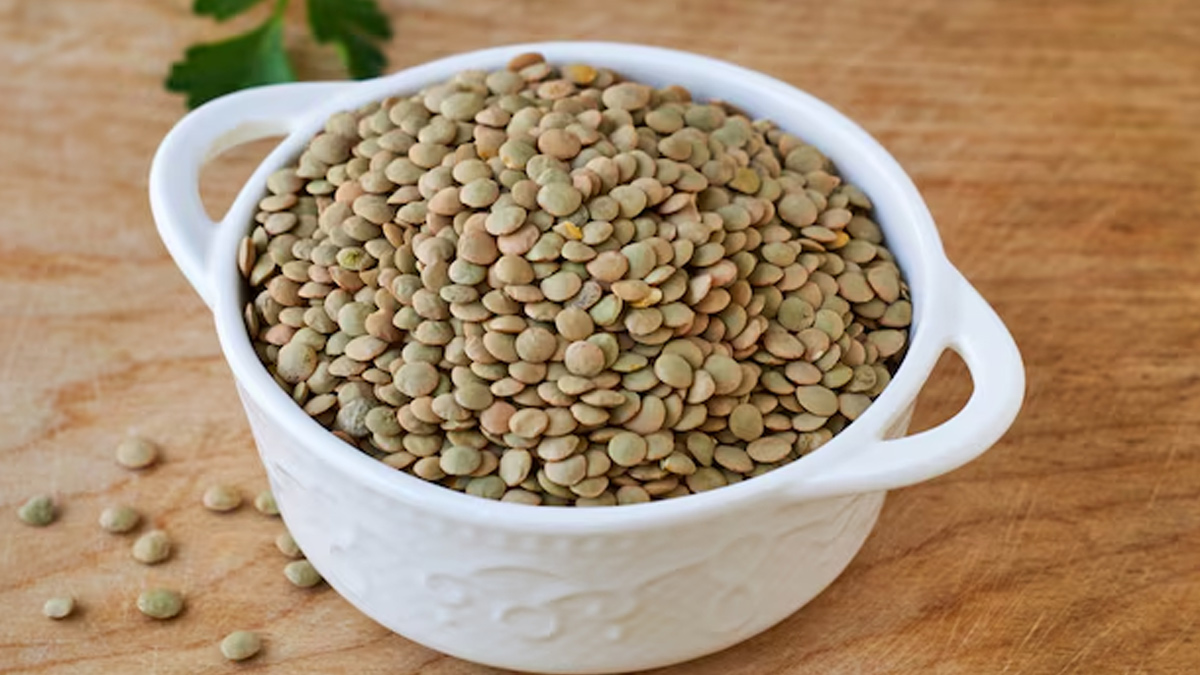
Protein is essential for building muscle, boosting energy, and maintaining overall health. For those on a vegan diet, getting enough protein—and ensuring it’s properly absorbed—can be a challenge. Unlike animal proteins, plant-based proteins often contain anti-nutrients that can hinder absorption, leading to inefficiencies in meeting daily protein needs. However, with the right food choices and simple preparation techniques, you can maximise protein absorption and fuel your body effectively. From lentils to chia seeds, certain vegan protein sources stand out for their nutrient density and bioavailability. Let’s explore five of the best options and how to make the most of them.
Table of Content:-
Expert Insights on Vegan Protein Absorption
View this post on Instagram
Dr Santhosh Jacob, HOD of Obesity Management and Exercise Medicine, Ageless Fitness, Chennai, shares his expertise on optimising plant-based protein intake. He explains, “Vegan proteins are powerful, but how you prepare and pair them makes all the difference. Simple steps like soaking, sprouting, or combining with vitamin C-rich foods can significantly enhance absorption.” With his guidance, let’s dive into the top five vegan protein sources and how to unlock their full potential.
1. Lentils: Fiber-Rich Protein Powerhouses

- Protein content: ~18g per cooked cup.
- Why they work: Lentils are loaded with protein, fiber, and iron, making them ideal for muscle repair and energy.
Maximise absorption:
- Pair lentils with vitamin C-rich veggies like tomatoes or bell peppers. Vitamin C boosts iron absorption.
- Cook with cumin or turmeric to enhance nutrient uptake.
- Add a squeeze of lemon to neutralise anti-nutrients like phytic acid.
The expert explains: “Lentils are a staple, but pairing them with vitamin C sources like tomatoes can increase iron absorption by up to 300%. A dash of lemon works wonders too.”
2. Quinoa: The Complete Protein
-1742191536079.jpg)
- Protein content: ~8g per cooked cup.
- Why it works: Quinoa is a rare complete plant protein, containing all nine essential amino acids.
Maximise absorption:
- Rinse and soak quinoa before cooking to remove saponins, which can block nutrient absorption.
- Combine with beans or chickpeas for a balanced amino acid profile.
ALSO READ: Can You Refrigerate Cooked Potatoes? Here’s What An Expert Says
3. Tofu, Tempeh & Edamame: Soy’s Triple Threat
-1742191594014.jpg)
- Protein content: Tofu (~10g per ½ cup), tempeh (~15g per ½ cup), edamame (~17g per cooked cup).
- Why they work: Soy mimics animal protein quality, and tempeh’s fermentation boosts bioavailability.
Maximise absorption:
- Pair tofu with fermented foods like kimchi or miso to aid digestion.
- Opt for tempeh—its fermentation breaks down anti-nutrients, making protein easier to absorb.
4. Chickpeas & Beans: Affordable Muscle Fuel
-1742191612655.jpg)
- Protein content: ~15-18g per cooked cup.
- Why they work: Chickpeas and beans are rich in protein, fiber, and folate.
Maximise absorption:
- Soak and sprout beans before cooking to reduce phytic acid.
- Pair with whole grains (e.g., brown rice) to create a complete protein.
Dr Jacob adds: “Sprouting chickpeas cuts anti-nutrients by 50%, ensuring your body absorbs every gram of protein.”
5. Chia & Hemp Seeds: Tiny But Mighty
-1742191632478.jpg)
- Protein content: ~8-10g per tablespoon.
- Why they work: These seeds offer complete protein, omega-3s, and fiber.
Maximise absorption:
- Soak chia seeds to form a gel, which eases digestion.
- Lightly roast hemp seeds or add them raw to smoothies and salads.
ALSO READ: How Kokum Juice Helps Non-Veg Eaters Tackle Acidity and Improve Bowel Movements
Science Supports Smart Pairing
A 2020 study in the American Journal of Clinical Nutrition found that combining plant proteins (e.g., lentils with grains) can match the absorption rate of animal proteins. Researchers noted that soaking, fermenting, or pairing with vitamin C significantly boosts bioavailability.
Final Tips for Vegan Fitness Success
- Mix proteins: Combine grains and legumes to get all essential amino acids.
- Hydrate well: Water aids digestion and nutrient transport.
- Chew thoroughly: Breaks down fiber, helping your body access protein.
As the expert advises: “Building muscle on a vegan diet isn’t just about quantity—it’s about smart pairing. Follow these steps, and your body will thank you.”
Conclusion
Vegan protein doesn’t have to be complicated. By choosing nutrient-dense options like lentils, quinoa, and chia seeds—and using simple absorption hacks—you can fuel your fitness goals effectively. Whether you’re lifting weights or staying active, these plant-powered strategies ensure you get the most out of every bite.
Also watch this video
How we keep this article up to date:
We work with experts and keep a close eye on the latest in health and wellness. Whenever there is a new research or helpful information, we update our articles with accurate and useful advice.
Current Version